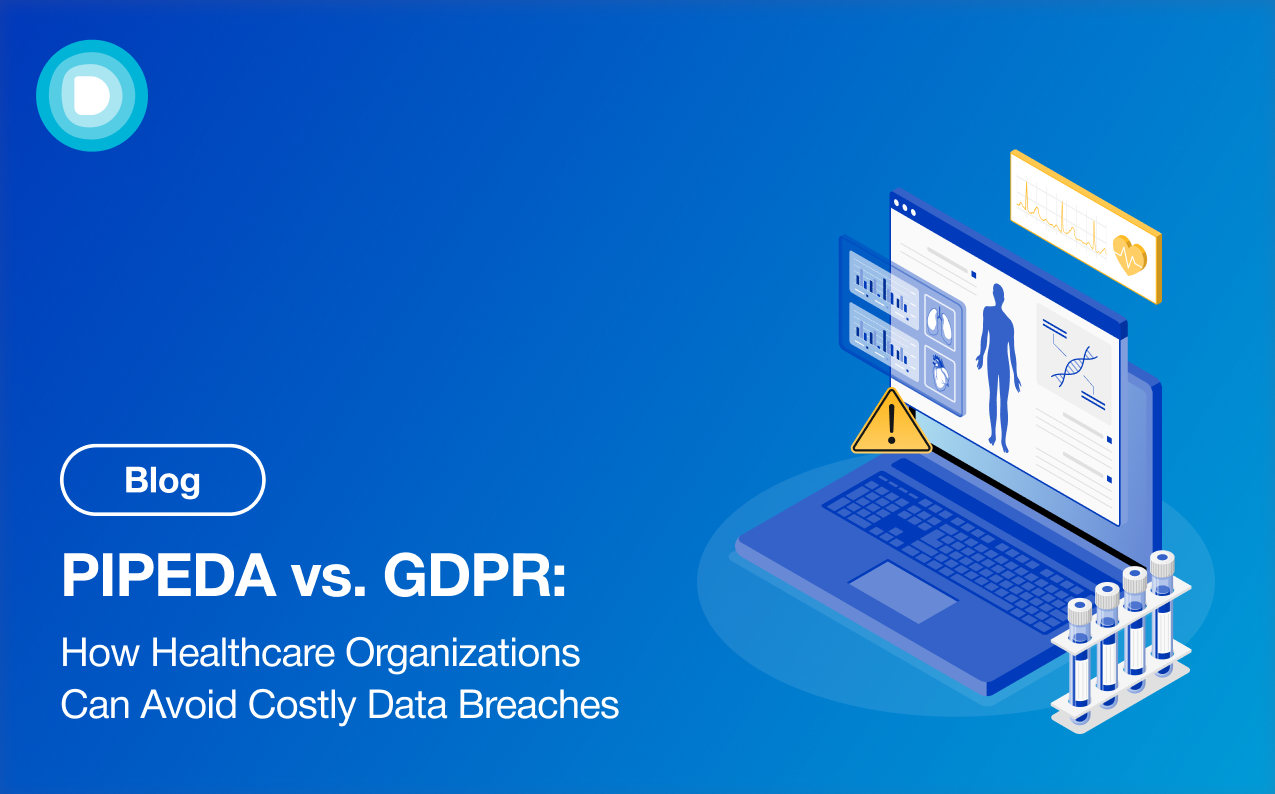- Product
-
Solution
-
By Industry
Cybersecurity solutions tailored to your industry’s needs.
-
- Resources
-
Books
Our ultimate guides and playbooks
Solution Briefs
Overview of PureDome’s functionality
-
Quizzes
Assess your cybersecurity readiness
Case Studies
PureDome customer success stories
Newsletter
Subscribe to the PureDome newsletter
-
- About Us
- Partner
- Pricing
- Download
PIPEDA vs. GDPR: How Healthcare Organizations Can Avoid Costly Data Breaches
-
Aiman Ikram
-
13 May 2025
- 3 min read

Data breaches in healthcare aren’t just an IT issue—they’re a financial and reputational disaster. In 2023 alone, the global average cost of a healthcare data breach hit $10.93 million per incident. That’s a number no hospital or clinic wants to see on its balance sheet. But here’s the kicker: many of these breaches could have been prevented with better compliance strategies.
For healthcare organizations operating in Canada, the rules of the game are shaped by PIPEDA (Personal Information Protection and Electronic Documents Act), while those working with European patients have GDPR (General Data Protection Regulation) to worry about. Two different frameworks, both with the same core objective—keeping patient data safe. But how do they stack up, and what can you do to avoid becoming the next cautionary tale?
Why Healthcare Data Breaches Are a Growing Threat
Data breaches in healthcare aren’t rare slip-ups. They’re a trend. A troubling one. Healthcare providers need airtight security. That starts with understanding the regulations they’re supposed to follow.
- Cybercriminals love healthcare data. Unlike a stolen credit card, which has a short shelf life, medical records are worth 10-40 times more on the black market.
- Human error is a major culprit. A study found that 95% of cybersecurity incidents in healthcare involve a simple mistake—sending data to the wrong person, weak passwords, lost devices.
- Remote work and digital records add new risks. More digital patient files, more cloud storage, more remote access—each a new potential entry point for hackers.

PIPEDA vs. GDPR: The Basics
Both laws exist to protect personal data, but their scope and approach differ. Failing to comply with either? That’s where the fines start rolling in.
- PIPEDA applies to private-sector organizations across Canada handling personal data in commercial activities, including healthcare clinics and insurers.
- GDPR applies to any organization—anywhere in the world—that processes the personal data of EU citizens, including international healthcare providers offering telemedicine.
Key Differences Between PIPEDA vs GDPR for Healthcare
Understanding the finer details of these laws helps healthcare organizations avoid missteps. So, whether you operate in Canada or cater to international patients, compliance isn’t optional. But knowing the rules is only half the battle. Here’s a breakdown:
|
Feature |
PIPEDA |
GDPR |
|
Consent Requirements |
Reasonable expectation of use |
Explicit, affirmative consent required |
|
Right to Access & Deletion |
Access and correction allowed; no guaranteed deletion |
Full data access rights + right to be forgotten |
|
Breach Notification |
Mandatory if risk of significant harm exists |
Mandatory within 72 hours, regardless of harm |
|
Penalties for Non-Compliance |
Up to CAD $100,000 per violation |
Up to €20 million or 4% of global revenue |
How Healthcare Organizations Can Avoid Costly Data Breaches
Compliance is good, but prevention is even better. Here’s what healthcare providers need to focus on to ensure they are safe from the damages caused by a lack of compliance:
- Strengthen Access Controls
Limit data access to only those who need it. Multi-factor authentication (MFA) reduces the risk of unauthorized logins. - Encrypt Patient Data
Encrypted data is far less useful if stolen. Both PIPEDA and GDPR strongly recommend encryption as a core security measure. - Secure Remote Access
With telehealth services growing, providers need to ensure secure, VPN-protected access to patient records. - Train Employees Regularly
Since human error is a leading cause of breaches, cybersecurity training should be ongoing, not just a one-time event. - Have a Response Plan Ready
A breach response plan ensures quick action—reducing damage, meeting reporting requirements, and maintaining trust.
Choosing the Right Security Solution for PIPEDA and GDPR Compliance
Here’s the reality: compliance can feel overwhelming. The regulations are complex, and healthcare data is a prime target for cybercriminals. That’s why security solutions need to be both strong and simple—keeping data safe without overloading IT teams.
This is where PureDome helps.
- Secure remote access for healthcare professionals handling sensitive patient records.
- Encrypted connections that protect data in transit, ensuring compliance with both PIPEDA and GDPR.
- Access control features that limit who can see what, reducing the risk of leaks and unauthorized access.
For healthcare organizations serious about protecting patient data, reducing risk, and staying compliant, PureDome offers the security foundation you need—without the complexity.
Read up more on regulatory compliance in healthcare here.
Final Thoughts
Healthcare providers have enough to worry about—patient care, new medical technologies, growing workloads. But ignoring data security isn’t an option. The cost of a breach is too high, both financially and in terms of patient trust. Understanding PIPEDA vs GDPR is the first step. Implementing strong security measures is the next.
If your organization is looking for a reliable, scalable, and compliant security solution, PureDome is here to help. Because when it comes to healthcare data, safe is always better than sorry.